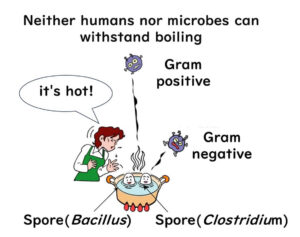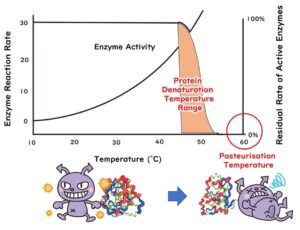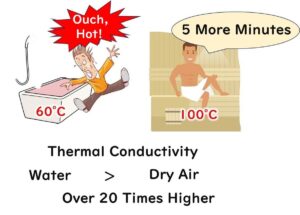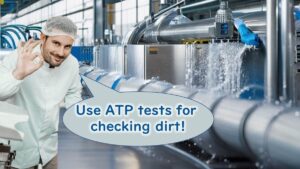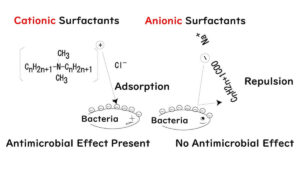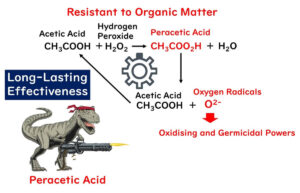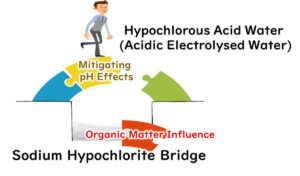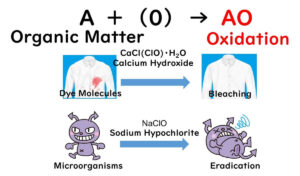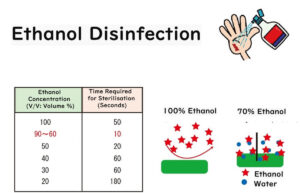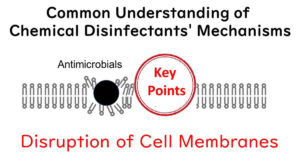Combating Food Pathogens and Spoilage
Defeating Botulinum Spores: The Science Behind Retort Sterilization at 121.1°C
Discover the rigorous science of retort sterilization, a pivotal technique in food safety that neutralizes the formidable spores of Clostridium botulinum at 121.1°C . This article explores the 'Botulinum cook' method, a specialized heat treatment that ensures the reduction of these dangerous spores in packaged foods, allowing for safe room temperature distribution. Join us as we unravel the balance between achieving maximum sterilization efficacy and preserving the quality and flavor of food, crucial for preventing foodborne illnesses.
Food heat sterilisation: practical application of Pasteur sterilisation and D and Z values
Ensuring food safety through heat sterilization is indispensable, primarily divided into two categories: pasteurization and retort sterilization. This article focuses particularly on pasteurization, breaking down complex concepts such as D values and Z values into bite-sized, easy-to-understand nuggets of wisdom. We'll not just stop at explaining these terms; we'll dive into their practical applications in the food sterilization process, giving you a front-row seat to the action.
Sterilisation of Food - Grasping the Basics of Heat Sterilisation
Ensuring the safety of food through heat sterilisation is crucial. To understand the basics, this article focuses on two main methods: moist heat sterilisation and dry heat sterilisation. We delve into why these methods show different efficiencies against microbes, exploring how humidity affects sterilisation efficiency and how the moisture content in the environment affects microbial survival. Additionally, we examine examples of heat-resistant spore-forming microbes, investigating why they resist common sterilisation methods from a scientific standpoint. From fundamental principles of microbiology, we deepen our understanding of the food sterilisation process.
Understanding the ATP Test: A Simple Guide to Cleanliness Management in Food Factories
Ensuring cleanliness in food factories is essential for product safety. The ATP test provides a quick and effective way to verify cleanliness after cleaning and sterilization, overcoming the time-consuming and complex nature of microbial testing. This article explains the biological significance and chemical structure of ATP, why it is an excellent energy carrier, and the methods and equipment used in ATP testing. By understanding the ATP test and its practical applications, food factories can manage cleanliness more comprehensively and efficiently.
The Food Factory - Quaternary Ammonium Salts (Benzalkonium Chloride)
Let's chat about benzalkonium chloride, a disinfectant often found lurking in the corridors of food factories, standing shoulder to shoulder with sodium hypochlorite as one of the most commonly employed germ-slayers. Benzalkonium chloride is a household name in the world of disinfectants.
Peroxyacetic Acid Formulations as Disinfectants in Food Factories
This article explores the use of peroxyacetic acid formulations as disinfectants in food factories.
Acidic Electrolyzed Water
In this article, we'll dive into a germ-killing agent that overcomes one of the drawbacks of sodium hypochlorite, which was discussed in our previous post. This drawback is its sensitivity to pH levels. The superhero in question? Hypochlorous acid water (acidic electrolyzed water).
Optimizing Sodium Hypochlorite Use in Food Factories: Key Insights and Practical Tips
Explore the essential role of sodium hypochlorite in maintaining cleanliness and safety within food factories. This guide dives into the science behind its effectiveness as a disinfectant, examining its chemical properties, the impact of pH levels, and the influence of organic matter on its germ-fighting power. Learn why sodium hypochlorite is a trusted choice for contamination control in food production, along with best practices to maximize its potential while ensuring safe, clean environments for food handling.
Ethanol Sterilization and Its Mechanism
When it comes to the world of ethanol sterilization, 70% concentration is the star of the show. But why is this particular concentration the MVP of germ-kicking action? Well, it's not like there's a crystal clear playbook on this—there are still some grey areas and "hmm" moments in understanding the exact principles and mechanisms at play. This article aims to shed some light on what we reckon is going on, focusing especially on the efficacy (or lac
Essential Common Understanding of Disinfectant Mechanisms in Food Factories
In the enchanting realm of food factories, where battles against invisible foes are fought daily, understanding the mechanisms of disinfectants is akin to mastering spells in wizardry. As we embark on this mystical journey through the mechanisms of various disinfectants, it's paramount to grasp a fundamental truth, a common thread weaving through the fabric of all disinfectant strategies: the cell membrane.
